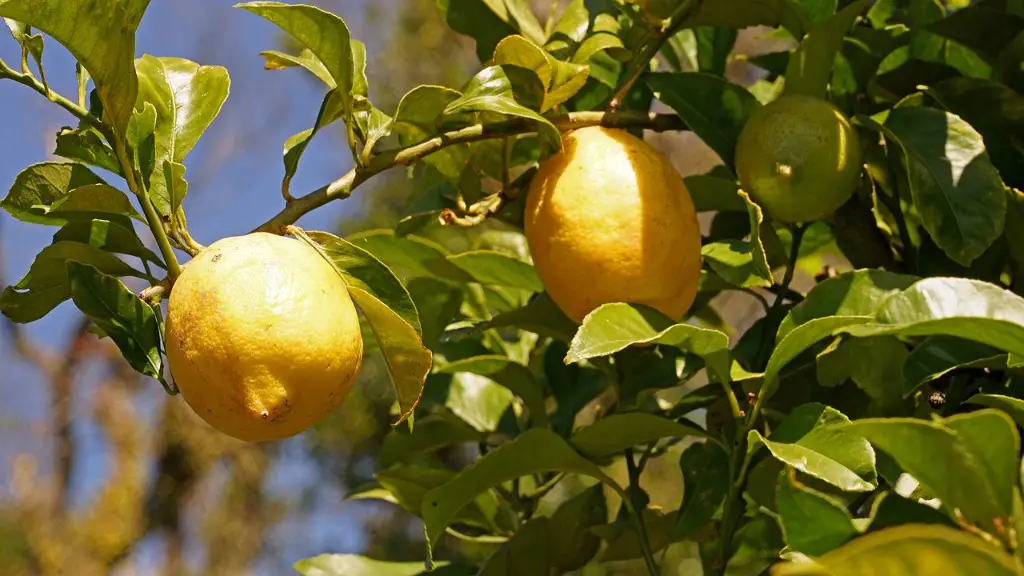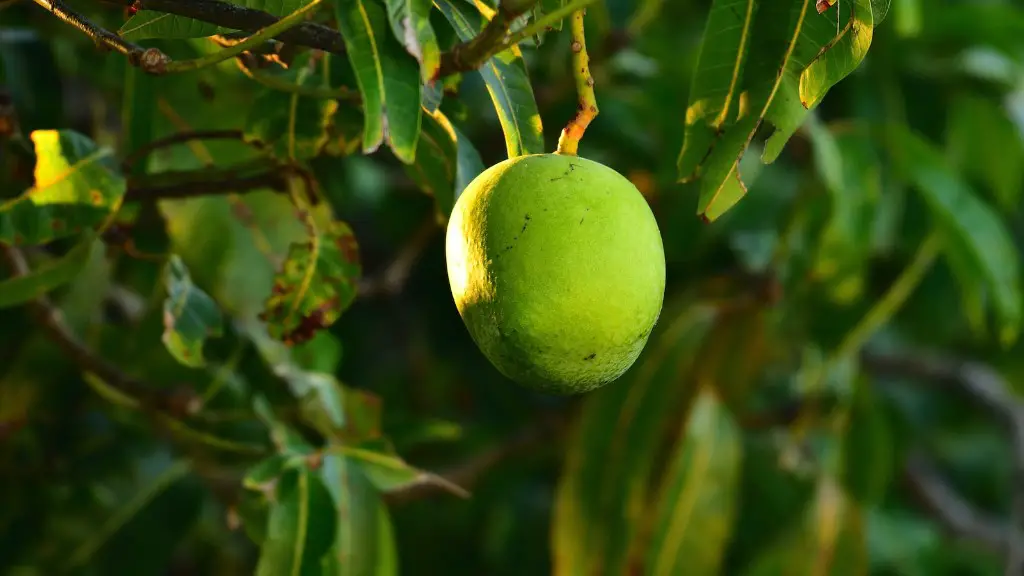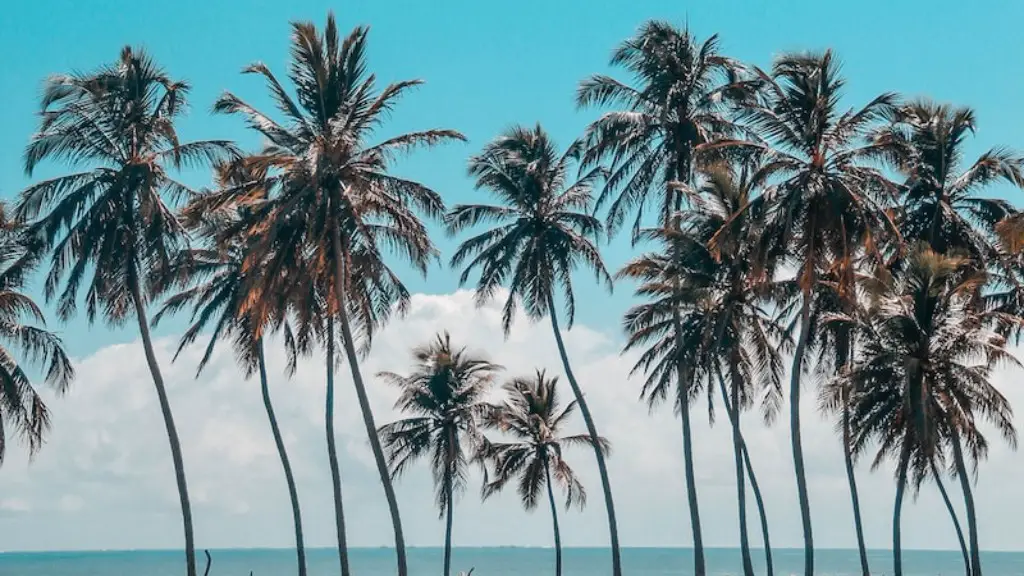Meyer lemon trees are a hearty and versatile citrus tree that can be transplanted nearly any time of the year, depending on the climate. While regional and seasonal conditions may determine the optimal time to transplant Meyer lemon trees, it’s best to transplant them during the Spring or Fall months, as the particular climate of an area usually reaches its warmest temperatures in the late summer months. Luckily, these trees can be successfully transplanted even in winter months for some locations, given the right soil and growing conditions.
Transplanting Meyer Lemon Trees is a delicate and detailed process. It is important to determine the best time of year to transplant the tree before attempting to remove it from the ground so as to minimize the chance of shock or transplant failure. Here are several steps to take before and after transplanting Meyer lemon trees to ensure that it is successful.
Steps to Take Before Transplanting Meyer Lemon Trees
The first step in transplanting Meyer lemon trees is to prepare the tree for removal from its existing location. This should be done two to three weeks prior to your desired transplant date. Carefully check the tree’s roots for any signs of disease or pests. Make sure to prune any dead or diseased branches, leaving only healthy green growth for transplant.
The second step is to determine the size of the Meyer lemon tree’s root system so you can create an appropriate and well-draining transplant site. Dig a test hole in the intended transplant site. Measure the tree’s root system and then modify the transplanting location accordingly.
The third step is to dig the Meyer lemon tree out carefully and safely. When digging the tree out of the soil, try to keep as much of the root system intact as possible. Use a spade to gently dig around the Meyer lemon tree’s root ball until the entire tree and root system can be removed without damaging the tree or its roots.
The fourth step is to provide temporary protection for the root system. Place the Meyer lemon tree and its root ball in a shady, moist area – like a bucket of water – until it is ready for transplant. If a bucket of water is not feasible, wrapping the root ball in a moist burlap cloth can also provide temporary protection for the tree.
Steps to Take After Transplanting Meyer Lemon Trees
The first step after transplanting Meyer lemon trees is to make sure the tree’s root ball is properly positioned in the transplant site. Dig a hole in the new location that is twice as wide and twice as deep as the root ball. Place the tree in the hole and backfill the soil around the root ball.
The second step is to water the Meyer lemon tree deeply. It is essential to thoroughly soak the soil surrounding the tree’s root ball in order for the tree to establish new roots and settle in the new transplant site.
The third step is to prune the Meyer lemon tree. After transplanting, the tree may suffer from some shock and some of its branches may become weakened or diseased if left unpruned. Use pruning shears to remove any dead or weak branches to promote the health and growth of the Meyer lemon tree.
The fourth step is to mulch the transplant site. Applying a layer of organic mulch to the soil around the Meyer lemon tree will help keep the soil surface moist and cool. This also helps to reduce weeds and disease.
The fifth step is to keep a close eye on the Meyer lemon tree and to monitor it closely for signs of stress or illness. If the tree shows signs of stress or illness, contact an expert in order to obtain the most efficient and effective treatment.
What to Plant Near Meyer Lemon Trees
When planting near Meyer lemon trees, avoiding tall trees and grasses is best. These trees should be planted where there is plenty of room for the roots to spread, so keeping plants low and on the ground is ideal. Herbs, such as oregano, chamomile, and calendula, as well as heat-loving plants, such as lavender, are good options for companion plants near Meyer lemon trees.
Meyer lemon trees also need plenty of sunlight, so when planting companion plants near the tree, make sure to choose fast-growing plants with low water requirements. Hardy succulents, such as echeveria and sedum, are good companion plants because they are drought-tolerant and require very little water.
Plant beds around Meyer lemon trees should be kept shallow and well-draining to promote proper water drainage and deter root rot. As these trees need plenty of nutrient-rich soil with good drainage, avoiding heavy clay and sandy soils is essential. Light, loamy soils that are high in organic matter are best for Meyer lemon trees.
Pest Control for Meyer Lemon Trees
Meyer lemon trees are susceptible to many common pests, such as aphids, scales, mites, mealybugs, and thrips. These pests can weaken the tree, making it more vulnerable to disease. To prevent pest infestation, Meyer lemon trees should be kept free of any dead or diseased branches and should be kept well-nourished with adequate water and fertilizer.
The most effective way to keep pests away from Meyer lemon trees is to practice good sanitation, such as removing any fallen fruit, leaves, or debris and disposing of them properly. Mulching the soil with organic materials, like compost or wood chips, will also help to deter pests.
When treating Meyer lemon trees for pests, it is important to choose a pesticide that is safe and effective. Always read the pesticide label and follow the instructions carefully. Avoid using insecticides that are too strong or too weak as this can result in damage to the tree.
Harvesting Meyer Lemons
When it comes to harvesting Meyer lemons, the best time to harvest is just as the fruit begins to turn yellow and the peel starts to soften. Lemons picked at this time will have maximum flavor and sweetness. Make sure to pick Meyer lemons when the skin is still firm as ripe lemons that are left on the tree for too long can lose their flavor and become mushy.
It is important to use sharp garden shears when harvesting Meyer lemons to avoid damaging the tree or the fruit. Shears should be cleaned with rubbing alcohol or soapy water to reduce the chances of spreading any contagions. Grab the Meyer lemon at the base of the stem and cut it off with a clean and swift motion.
Harvested Meyer lemons can be stored at room temperature for up to three weeks. For longer storage, Meyer lemons can be frozen in a sealable plastic bag and can keep for up to three months.
Frost Protection for Meyer Lemon Trees
Meyer lemon trees are sensitive to cold weather and can be damaged by temperatures that dip below 30°F. To protect the tree from extreme cold, Meyer lemon trees can be covered with a frost blanket when temperatures dip below 30°F. Make sure to keep the blanket off the tree in temperatures between 30°F – 40°F. When temperatures return to above 40°F, remove the frost blanket.
Meyer lemon trees can also be protected from freezing temperatures by using an irrigation system. During cold winters, setting an irrigation system to run on a timer can keep the root system of the Meyer lemon tree from freezing. This will also help encourage strong root growth in early spring.
Another important step to protecting Meyer lemon trees from frost is to ensure that the tree is well-nourished. Make sure to prune the tree and apply fertilizer in early fall to promote its overall health and frost resistance.
When transplanting Meyer lemon trees, it is important to take into account the local climate and the individual tree’s growing requirements in order to ensure successful transplantation. Following the steps outlined above and providing adequate pest control, mulch, and frost protection, Meyer lemon trees can be a thriving and versatile addition to any garden.




